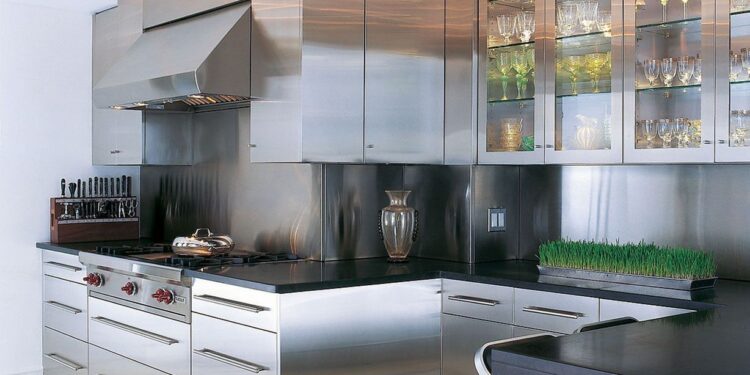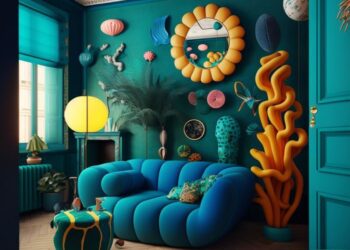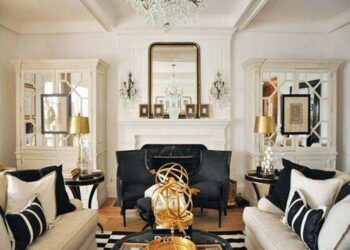Stainless steel has made a powerful comeback in the world of interior design. Once confined to commercial kitchens and industrial spaces, this sleek and durable material now dominates residential and commercial interiors alike. With its clean lines, contemporary aesthetic, and unmatched resilience, stainless steel is redefining modern luxury.
In this article, we will explore the multifaceted applications of stainless steel in interior spaces, from kitchens and bathrooms to furniture, lighting, and commercial installations. We’ll look at the growing popularity of this material in 2024–2025, its functional and aesthetic benefits, how it pairs with other materials, and practical tips for integrating stainless steel into your design scheme.
A Brief History of Stainless Steel in Interiors
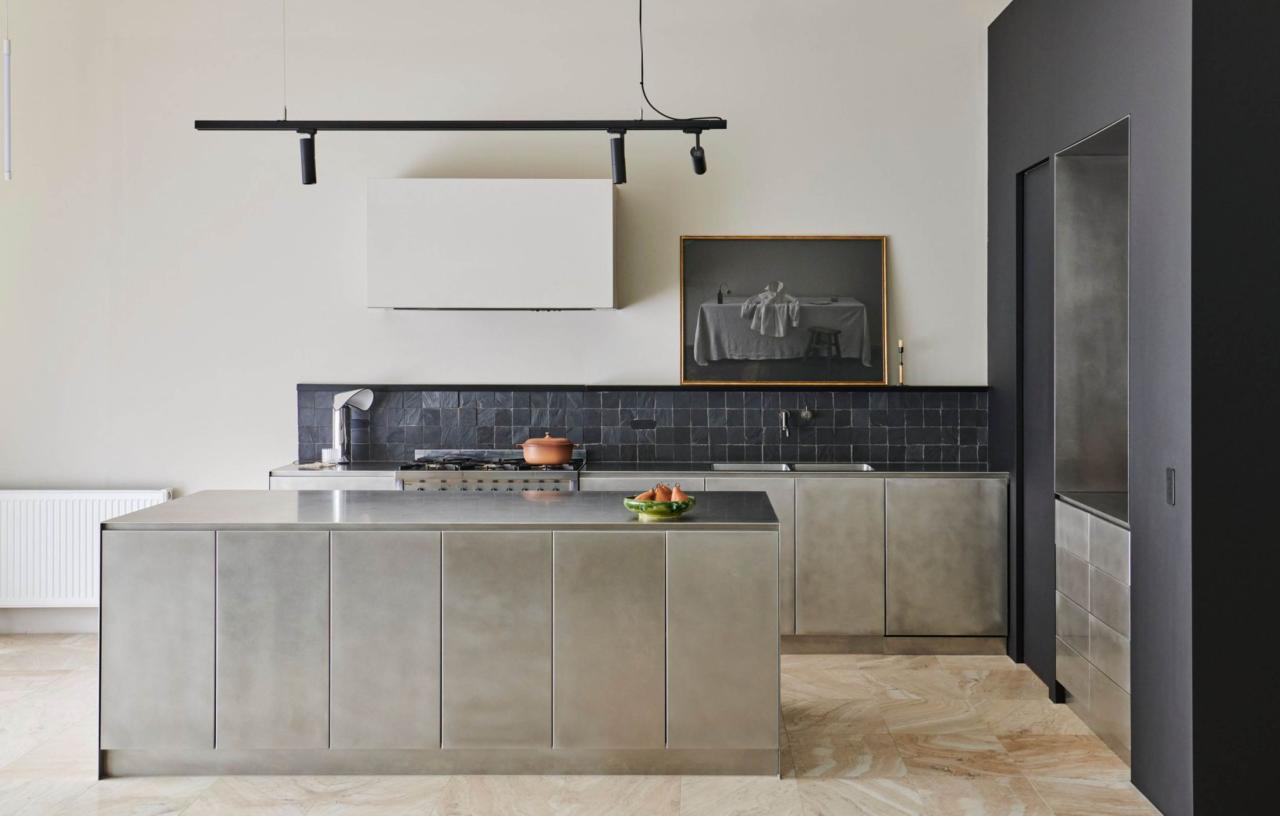
Stainless steel, an alloy known for its corrosion resistance and strength, was first developed in the early 20th century. Originally used in machinery and industrial applications, its shine and durability quickly caught the attention of architects and designers. In the 1930s, Art Deco skyscrapers began incorporating stainless steel as a statement of modernity and progress. Fast-forward to today, and stainless steel has evolved from functional necessity to a refined design feature.
Its journey into interior design has been gradual. While its use in commercial kitchens and hospitals was always common due to hygiene and ease of maintenance, it’s only in recent decades that stainless steel has become a design staple in homes, offices, and high-end public spaces.
Why Stainless Steel Is Trending in 2024–2025
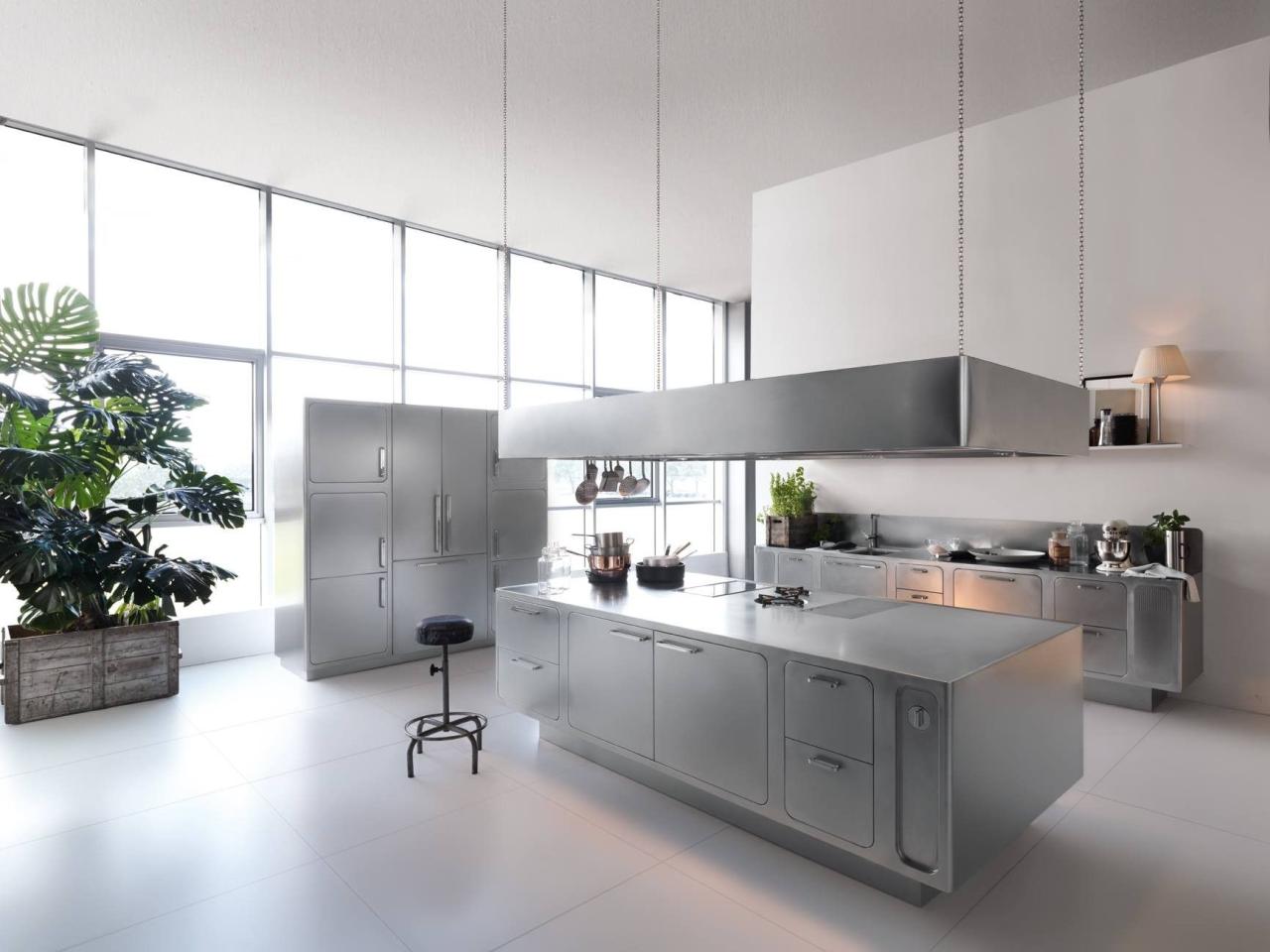
Modern design increasingly emphasizes minimalism, sustainability, and clean aesthetics — all of which align perfectly with the properties of stainless steel. Design professionals and homeowners alike are rediscovering its value not just for practicality but also for its visual impact.
From brushed and matte finishes to highly polished mirror-like surfaces, stainless steel offers aesthetic flexibility that few other materials can match. It reflects light, making spaces appear brighter and larger, and pairs well with a variety of materials like wood, marble, and glass.
In 2024 and beyond, stainless steel continues to dominate design exhibitions, interior design magazines, and architectural showcases. Designers are embracing full stainless-steel kitchens, bathrooms with steel fixtures and vanities, and even sculptural furniture pieces crafted from steel panels or rods.
Key Advantages of Stainless Steel

Stainless steel is not just beautiful — it’s also a high-performance material. Below are the primary reasons why it has become a favorite among designers and homeowners:
A. Durability
Stainless steel is exceptionally resistant to rust, heat, and physical damage. It’s ideal for high-use areas like kitchens and bathrooms, where it can endure wear and tear without losing its appeal.
B. Hygiene
Its non-porous surface doesn’t harbor bacteria or germs. That’s why it’s been a staple in medical and food environments for decades. In home settings, this makes it perfect for countertops, sinks, and appliances.
C. Low Maintenance
It’s easy to clean with simple soap and water. It doesn’t stain easily, and with occasional polishing, it maintains its sleek look for years.
D. Sustainability
Stainless steel is recyclable and often made from recycled materials. Its long life span also reduces the need for replacement, making it a sustainable choice.
E. Versatility
With finishes ranging from satin to mirror polish, and forms that include sheets, tubes, mesh, and rods, stainless steel can adapt to virtually any design concept.
Stainless Steel in Residential Interiors
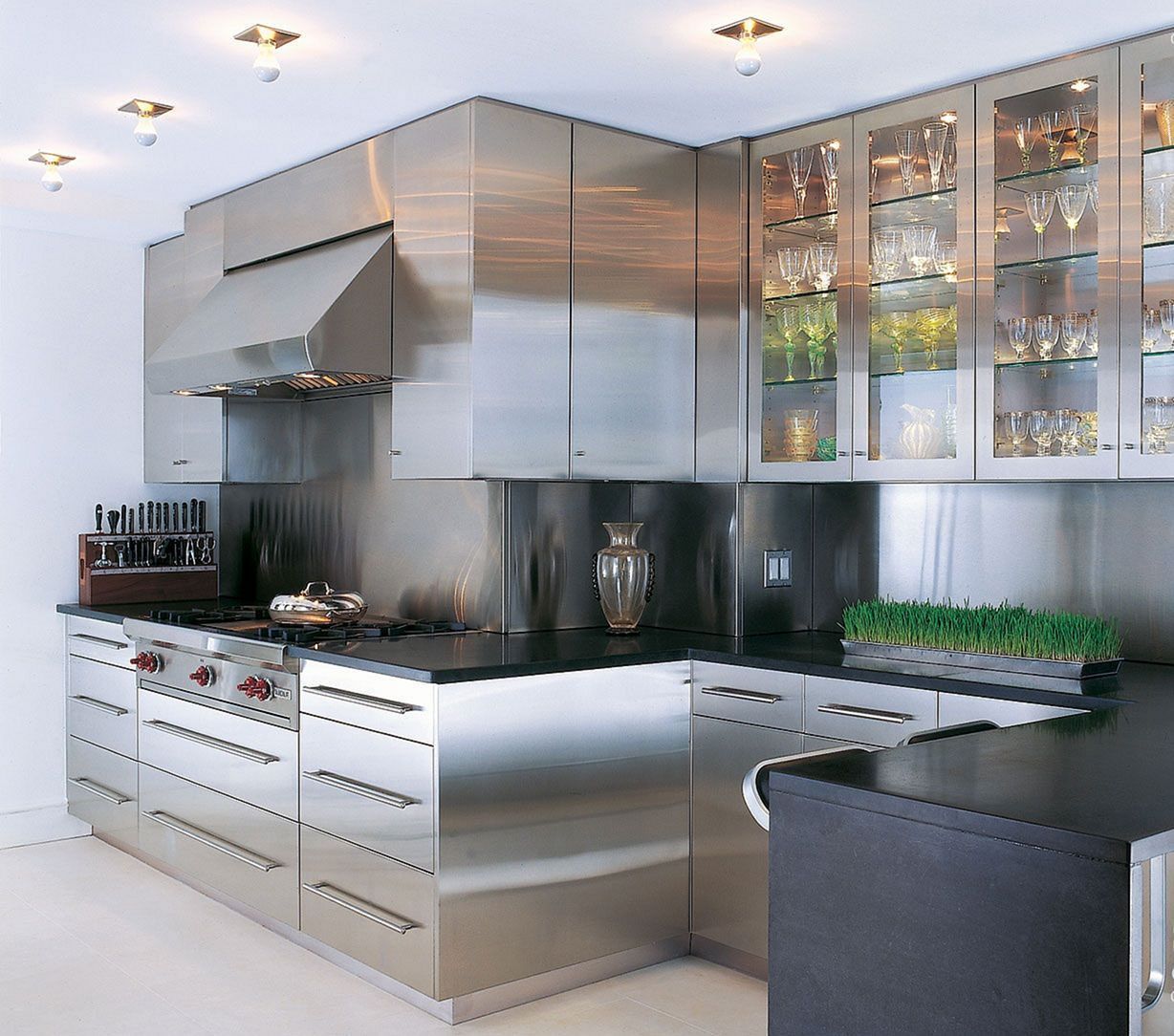
Kitchens
Perhaps the most common residential application, stainless steel continues to rule the modern kitchen. From countertops and backsplashes to sinks and appliances, it offers a seamless look and unmatched functionality. Integrated stainless countertops paired with matching backsplashes create a cohesive, professional look.
For minimalist designs, homeowners are increasingly choosing stainless cabinetry and islands. Open shelving units in steel or floating stainless pantries also add industrial flair without compromising elegance.
Bathrooms
Bathrooms benefit from stainless steel’s water-resistant and hygienic properties. It is now being used for vanities, shower surrounds, faucets, and accessories. Its sleek appearance complements other bathroom materials like ceramic, stone, or glass.
Floating vanities with stainless legs, mirrors framed in polished steel, and towel warmers made from steel tubing are increasingly featured in contemporary bathroom designs.
Furniture and Lighting

Beyond kitchens and bathrooms, stainless steel is also being used in custom furniture and lighting designs. Think coffee tables with steel legs, bookshelves with metal frames, and steel barstools with leather seats.
Pendant lights, floor lamps, and wall sconces made of brushed steel lend a futuristic, sophisticated edge. Stainless is particularly effective in open-plan spaces where its reflective properties enhance natural light and add dimension.
Bedrooms and Living Areas
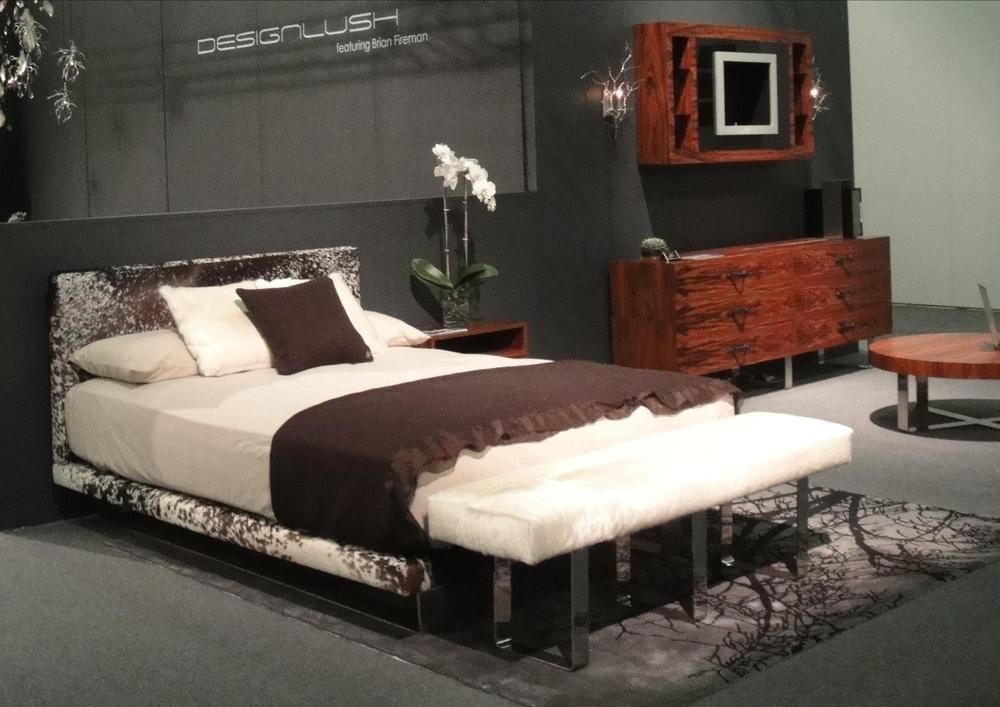
In bedrooms, stainless steel can be used for bed frames, nightstands, or decorative screens. Paired with soft textiles like velvet or linen, it provides a balanced contrast. Living rooms also benefit from steel accents: consoles, side tables, wall-mounted shelves, and even media units designed in brushed or matte steel.
Stainless Steel in Commercial and Public Spaces
Stainless steel is the go-to material for high-traffic commercial areas due to its robustness and professional appearance.
Offices
In offices, stainless steel is used for desks, stair railings, door handles, and even wall panels. It projects professionalism and is easy to maintain — a win-win for business spaces.
Hotels and Retail
In the hospitality sector, steel is often featured in hotel lobbies, elevators, check-in counters, and decorative columns. It conveys luxury while withstanding wear. Retail stores use steel fixtures, mannequins, shelving, and display frames to showcase merchandise against a modern backdrop.
Restaurants and Cafes
Open-concept kitchens and bar areas now integrate steel into counters, tabletops, and custom shelves. It communicates cleanliness and culinary professionalism. Steel mesh partitions are also being used to create flexible dining zones without fully blocking light or airflow.
Public Transit and Institutions
Stainless steel is indispensable in public transit stations, airports, and medical centers. Handrails, seats, barriers, and signs made of steel offer safety and resilience in high-traffic environments.
Combining Stainless Steel with Other Materials
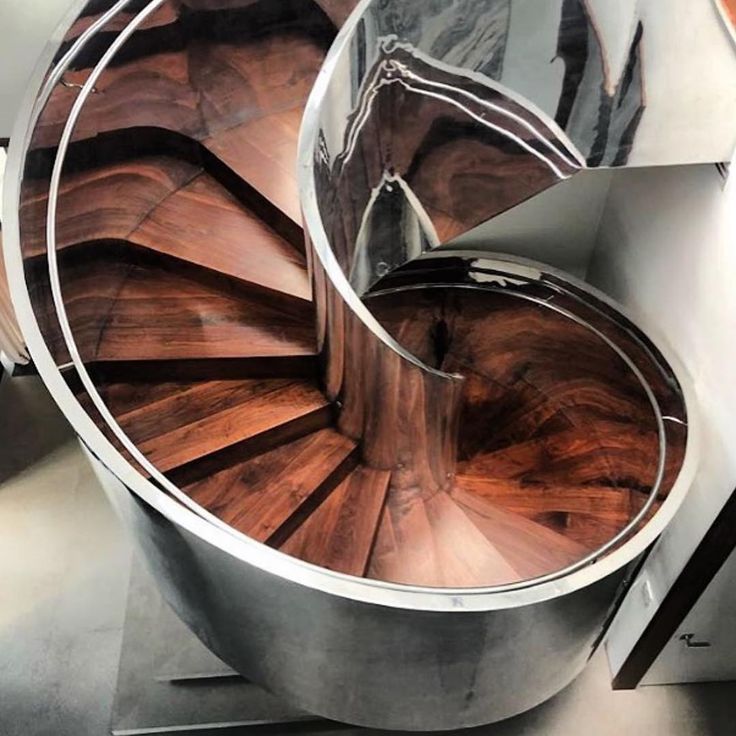
Designers rarely use stainless steel alone. To achieve balanced, inviting interiors, it’s often paired with warmer or contrasting materials:
A. Wood
Natural wood counters or cabinetry contrast beautifully with stainless steel appliances or backsplashes. The organic grain softens the coolness of the metal.
B. Stone
Marble or granite counters combined with steel sinks or shelves deliver luxury with edge. Dark stones, in particular, enhance the reflective quality of steel.
C. Glass
Whether frosted or clear, glass complements steel in doors, tables, and partition walls, maintaining a light and airy feel.
D. Concrete
In industrial-inspired homes, concrete floors or walls paired with steel furniture and fittings make for a dramatic, minimalist style.
E. Fabric and Leather
Upholstered chairs, sofas, and bed linens help counterbalance steel’s cool tone. Textiles bring comfort and color.
Maintenance Tips
While stainless steel is low maintenance, a few best practices will keep it looking its best:
A. Regular Cleaning
Use a soft cloth and mild detergent to clean surfaces. Avoid bleach or harsh chemicals.
B. Preventing Scratches
Although steel is durable, it’s not scratch-proof. Avoid abrasive sponges. Use cutting boards and trivets in kitchens.
C. Fingerprint Control
For high-touch areas like refrigerator doors or cabinet handles, choose a brushed or satin finish that hides fingerprints better than a mirror polish.
D. Occasional Polishing
Use stainless steel polish or natural options like olive oil to restore shine. Always polish in the direction of the grain.
Styling Ideas

Here are ways to successfully integrate stainless steel into your interior design:
A. Statement Pieces
A stainless steel dining table or kitchen island can become the centerpiece of a room.
B. Accent Details
Use steel for door hardware, curtain rods, and cabinet handles to introduce subtle touches of sophistication.
C. Mix and Match
Don’t be afraid to combine steel with vintage decor, bold colors, or traditional elements for a more eclectic aesthetic.
D. Reflect Light
Place stainless pieces near natural light sources to amplify brightness and open up smaller spaces.
E. Choose the Right Finish
For cozy spaces, brushed finishes provide warmth. For modern or futuristic vibes, go for high gloss or mirrored finishes.
Stainless Steel: Here to Stay
Stainless steel has moved beyond its utilitarian origins to become a key player in contemporary design. Whether you’re renovating a kitchen, designing a bathroom, or creating a modern living room, this metal provides form and function in equal measure.
Its ability to adapt to any style — from minimalist to luxurious — ensures its place in future interiors. With the right combinations and thoughtful use, stainless steel can elevate every corner of a space, offering longevity, beauty, and timeless appeal.

